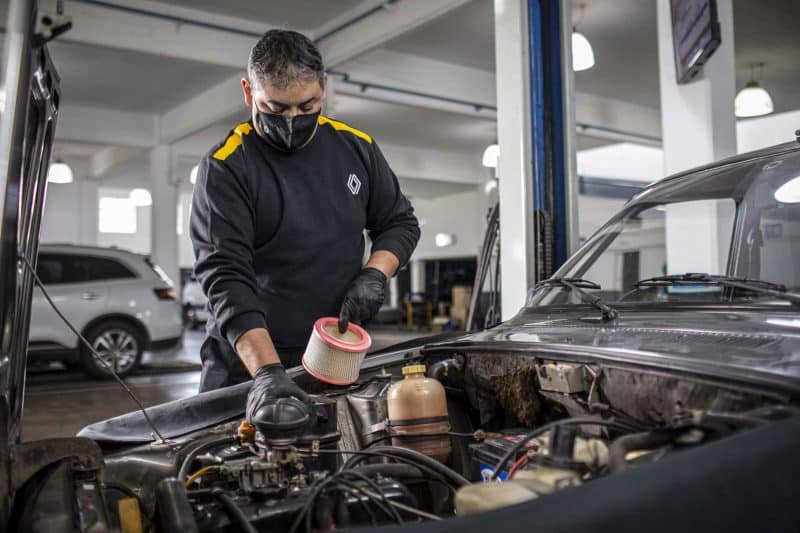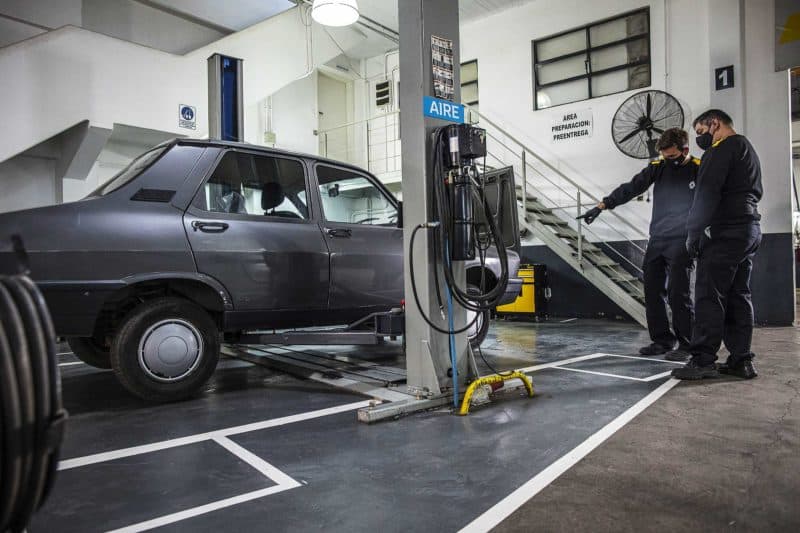We all have dreams. That was also the case with Alberto, a 76-year-old retiree from General Pico. His dream was simple, but deeply rooted: a Renault 12. It was not just any car for him. It was the first vehicle he had ever driven. A symbol of freedom, adventure and youthful indiscretion. A model that he considered “robust” and “indestructible”, but had always remained beyond his reach.
Gonzalo's grand gesture
When his grandson Gonzalo found out about this long-cherished wish, he decided to take action. With a mix of determination, passion and respect for his grandfather, he saved every cent he earned as a DJ. He even sold his own motorcycle to raise the necessary funds. His efforts ultimately resulted in the purchase of a 12 Renault 1993. Although the car needed a lot of love and attention, the emotional moment of handing it over was priceless.
From a simple gesture to national news
What started as a personal gesture between grandfather and grandson took an unexpected turn. The Argentine media landscape picked up this heart-warming story. Suddenly Alberto and Gonzalo, two ordinary citizens, became national celebrities. Interviews, news articles, TV segments – the duo was everywhere.
Renault intervenes
The media attention also reached the highest echelons of Renault Argentina. Pablo Sibilla, the company's CEO, was deeply moved by the story. “This goes beyond just cars,” he said. “This is about family, about tradition and about celebrating our heritage.” Renault decided not to sit on the sidelines and made a remarkable decision: they would help with the restoration of the Renault 12. This was not only an opportunity to participate in a beautiful human story, but also to further Renault's corporate mission Care Service – ensuring their cars stay on the road for as long as possible.
From restoration to factory visit
With a team of experts and all the necessary parts in-house, the transformation of the Renault 12 began. What was once a classic and in questionable condition, slowly became a shining icon from the past. And Renault didn't stop there. As a token of appreciation for their customers' loyalty, they offered to maintain the car free of charge for Alberto's life.
The icing on the cake came when Alberto and Gonzalo were invited for a special tour of the Renault factory in Santa Isabel, Córdoba. This wasn't just any factory; it was the birthplace of many Renault 12s, including theirs.
The Renault 12: More than a car
The Renault 12 is not only the center of this story, but also a car with a rich history. Launched in 1969, it quickly became an icon in France and Europe. But its longevity and popularity exceeded European borders. The model had an impressive career in countries such as Argentina, Turkey and Romania, where it remained popular for decades.
This story is more than just a grandfather, a grandson and a car. It is a testimony of perseverance, love of family and respect for tradition. It reminds us that dreams, no matter how simple, have the power to unite us, and that passion and determination can produce unexpected and miraculous results.







The Renault 12 was a world car, not only because it was so good, but also because the car was intended and designed for all kinds of conditions. Relatively short wheelbase (same as an R4), robust construction (semi-rigid rear axle, passive steering), long suspension travel, simple construction for easy and economical maintenance. The 12 is suitable for both the Autoroute and gravel roads in Algeria or mountain roads in Argentina. The R12 was built all over the world: Australia, Argentina, South Africa, Canada, Colombia, France, Ireland, Ivory Coast, Madagascar, Morocco, Portugal, Spain and of course the licenses in Romania and Turkey.
The car was also going to be built in Brazil, at Willy's, but that factory was just sold to Ford, which immediately started building the Corcel there, a car strongly based on the 12: chassis and center section are the same, only the front and rear are different. otherwise. Later a VW was also derived from it. The Corcel even came onto the market slightly earlier than the 12.
The R12 succeeded the R8 and R10, including the legendary R8 Gordini. The introduction, 'Jour-J' was celebrated on a grand scale, hundreds of Gordini owners came to the Paul Ricard circuit in the south of France. Many were less enthusiastic about the R12G, because it of course had front-wheel drive while the R8G has nice old-school rear-wheel drive. The fact that the 12 set a much faster lap time did help, but the 8 is still more popular. Nevertheless, Renault showed that front-wheel drive can work very well in racing, which many models have subsequently proven.
The R12 and R15 were of course also built based on the R17, but the successor R18 also shared the same platform and therefore also the Fuego.
Beautiful story.
At the time, I went looking for a handyman car to do gardening for a colleague. This was with the mother of another colleague.
He didn't like it. Soaked roof rust, yellow tailgate on a green metallic car. Was a station from 1974.
I bought it myself for 250 guilders. It was 1986 then.
Driven until 1994. She was very bad.
The renovation started in the front garden of our terraced house with a welding machine in the hallway. Neighbors really weren't happy!
Later I had a key room.
I replaced entire sections of sills from A style to the rear lights. Suspension, jack stands etc, etc.
Then had it cheaply sprayed in orange from that time.
In 2015, the original engine gave up the ghost after 275000 km.
It now contains a B14 block from the Volvo 340. In the meantime, the engines had already been put in Renault Estafette etc., so they were no longer available.
Car is still in my possession.
This original car, once sold in the Netherlands, is now a rarity.
Roel Decker.
Renault Argentina shows here how to deal with driving heritage. Of course it is also commercially attractive for them, but they act the way we classic car enthusiasts like to see it and many manufacturers can follow this example.
A beautiful story and a beautiful car. My parents had 2 R12s in the XNUMXs, nice, comfortable cars of which I have good memories.
I invite Toyta to do the same for my 1.3 Toyota Starlet XLI 1990!!!!!! At the MOT they always find something to earn some money, while as a retired car mechanic I really know whether it is in good condition. For safety reasons, you are not allowed to enter the workshop to look at the defects. It's all about the €€€€€€. Let alone free inspection after 33 years of Toyota fan. 🤷🏾♂️🤷🏾♂️🤷🏾♂️
The 1.0 is no less. Same power as a Polo 1.3 from the same year, but about 2,5 liters per 100 more economical.
Find a universal garage where you can enter and where the prices are reasonable and where you can also take a look yourself!
A Renault 12 from 1993? isn't that a Dacia?
Renault 12 was, as far as I know, on sale until 1980
That's right for the Netherlands! I have taken the documentation, in Argentina - where this story takes place - the 12 was built from 1970 to 1994. In Turkey the model is called 'Renault Toros' and production runs from 1970 to 1999. The Dacia variant exceeds this. everything: start in 1969, end in 2004.
That's right, I have the last variant of Renault Toros from 1999 in Turkey